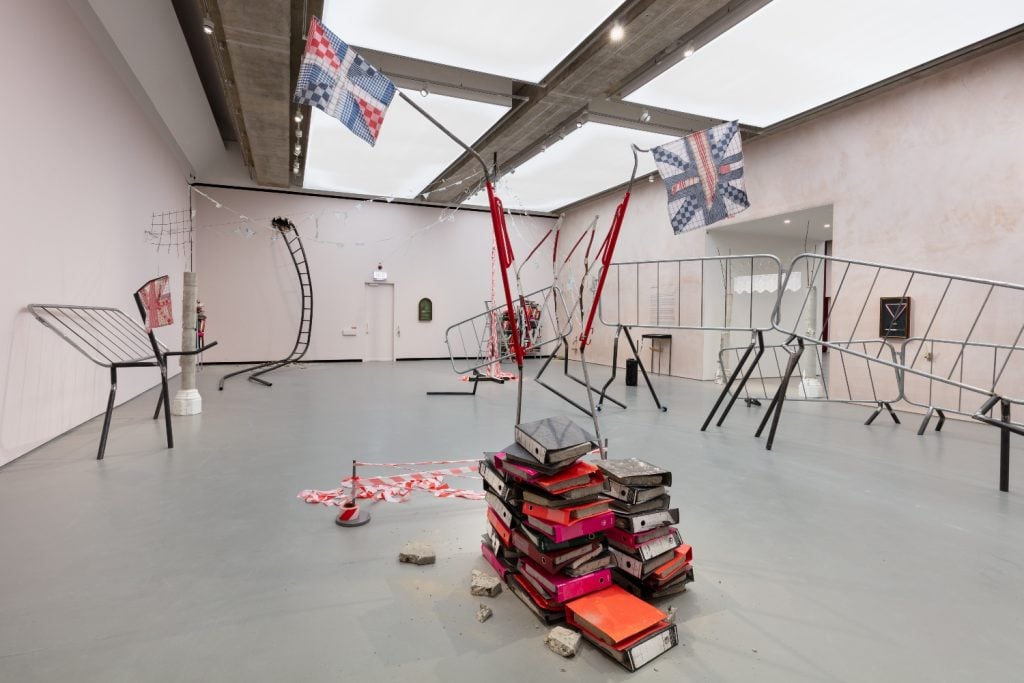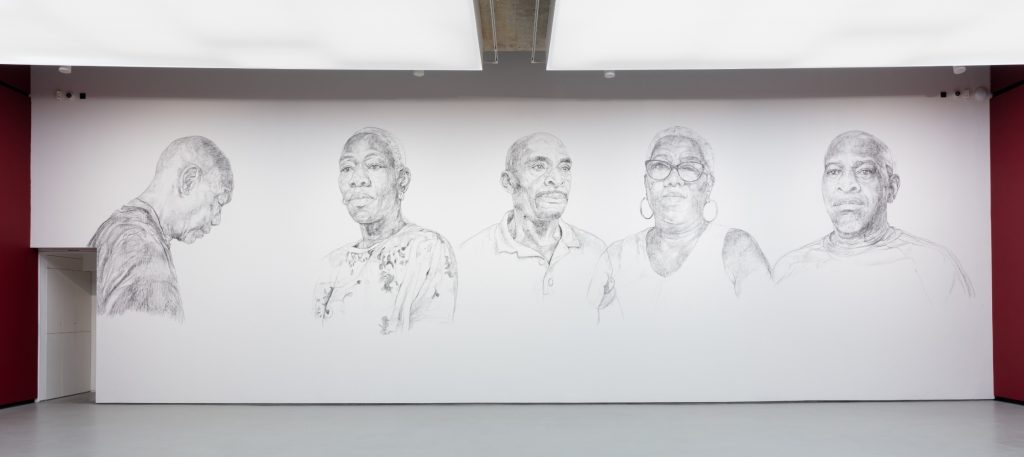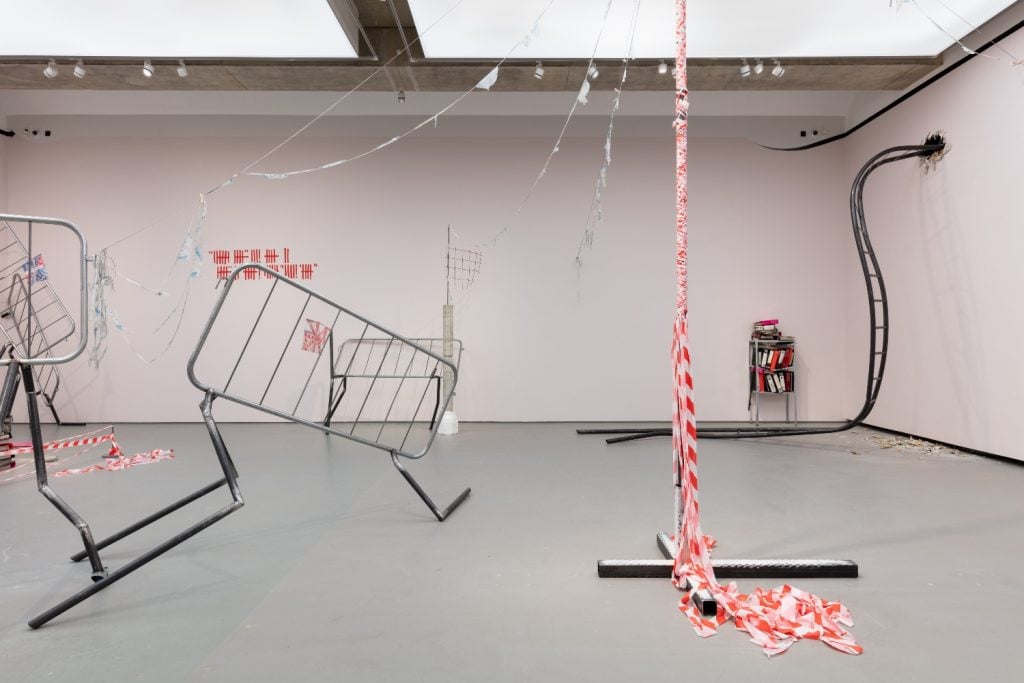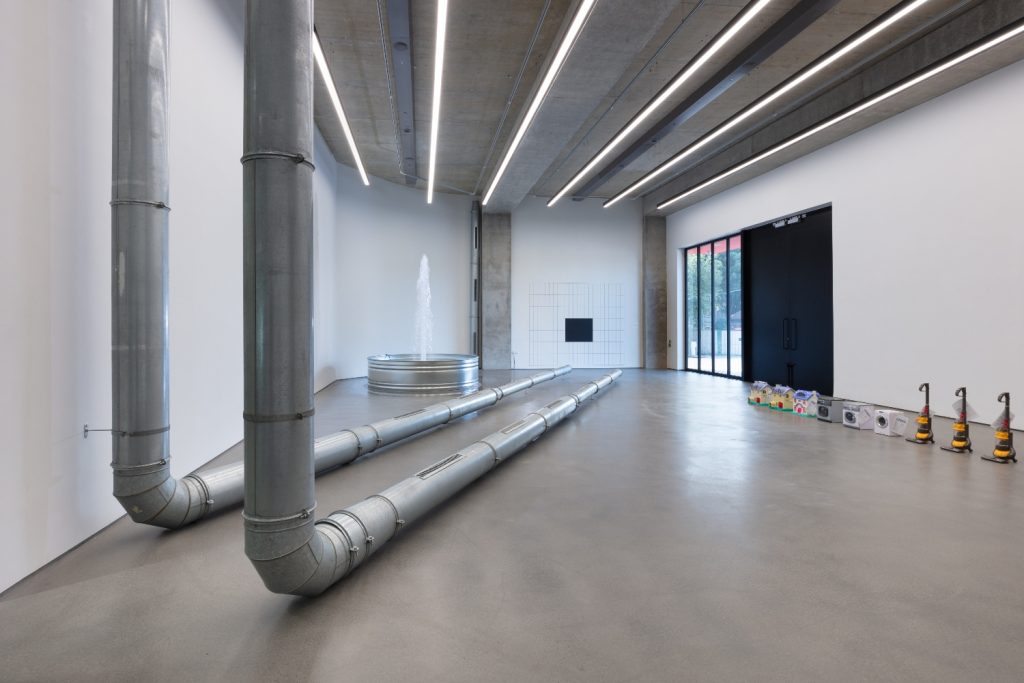Reviews
The Turner Prize Exhibition Promises to Tell Us Something About the Art of Our Time. In 2023, It’s Complicated
Each of the installations deals with a different aspect of contemporary society, but Jesse Darling's work was the clear standout.

Each of the installations deals with a different aspect of contemporary society, but Jesse Darling's work was the clear standout.

Jo Lawson-Tancred

The annual exhibition of artists nominated for the Turner Prize has opened at the Towner in Eastbourne, a coastal town south of London. The museum’s galleries are each filled by an installation of recent works by one of four selected artists—Jesse Darling, Ghislaine Leung, Rory Pilgrim, and Barbara Walker—putting their best work forward in hopes of winning the coveted accolade.
Each presentation strikes its own distinctive tone to address our present moment, but Darling’s is the clear standout.
The Turner Prize is one of the most prestigious prizes for contemporary art and the winner will receive £25,000 ($30,425) with £10,000 ($12,170) awarded to each runner up. The prize was established in 1984 and past winners include Damien Hirst, Grayson Perry, Wolfgang Tillmans, and Lubaina Himid. Veronica Ryan won the prize last year.
This year’s winner will be announced on December 5 at a ceremony at the Winter Garden in Eastbourne.

Barbara Walker at Turner Prize 2023, installation view. Photo: Angus Mill, courtesy of Towner Eastbourne.
Barbara Walker makes the strongest initial impact upon arrival to her gallery on the top floor. A huge mural stretching across the opposing wall brings the visitor face to face with people affected by the Windrush scandal, which saw thousands of people who had arrived to Britain from the Caribbean between 1948 and 1973 wrongly classified as illegal immigrants. The portraits’ mammoth size belies their intimate sensitivity, and this same affection for her subjects is evident in “Burden of Proof,” a series of smaller works on paper, for which Walker overlays these images with drawings of the documents that each individual used to prove they had settled legally. In one case, this is a certificate issued by the U.K.’s Home Office in 1979.
An almost feature length film at just over one hour, RAFTS is Rory Pilgrim’s chief contribution, although colorful drawings filled with childlike fantasies adorn the surrounding walls. A multi-part oratio, the video was made during the pandemic and features a mix of songs, dances, and rambling monologues by residents of London’s Barking and Dagenham borough. Their reflections on the small acts of creativity and community that have rescued them from “dark places” is sweet and, thanks to its harmonies, oddly transfixing. However, peppered with statements like “some days we just have to create our own sunshine” and “my raft has always been my dreams,” the work never pushes past its slightly tedious sentimentality.

Jesse Darling at Turner Prize 2023, installation view. Photo: Angus Mill, courtesy of Towner Eastbourne.
If Pilgrim’s overly earnest film revises the overall mood of 2020, focusing on the moments when some believed the pandemic might produce some kind of cultural reset, the wry and rickety installation by Jesse Darling feels like a more realistic wakeup call. Responding to its location, the work plays with stereotypes of a British coastal town in a decades-long decline with union jack flags made of tea towels flying over jaunty assemblages of metal barriers, red striped tape, lace doilies, and fragmented porcelain dolls that all look on the verge of falling to pieces.
Highlights include The Big Dipper (2023), rollercoaster rails from a funfair that crash energetically through the wall before dipping, breaking, and collapsing on the floor, and Epistemologies (2022), in which the hefty paper binders so symbolic of bureaucracy are stuffed with thick blocks of concrete. Without ever being too heavy-handed, these witty works speak to a society that has moved on from lonely lockdowns to face inflation, rising energy costs, and the fallout from Brexit.

Ghislaine Leung at Turner Prize 2023, installation view. Photo: Angus Mill, courtesy of Towner Eastbourne.
By far the most impenetrable of the artworks on display are those by Ghislaine Leung, which easily stump even a seasoned art journalist. Her “scores,” or written instructions, dictate how the found objects included should be displayed; in this case, a group of children’s toys were to be lined up along one wall, a makeshift fountain installed in the opposite corner and, cutting across the room, are the metal ventilation pipes once used to vanquish cigarette smoke. In spite of the instructions, these conceptual pieces manage to communicate very little, and could be mistaken for a random arrangement of items salvaged from a junk yard.
Each year, the Turner Prize is hosted by a different institution in the U.K. Towner Eastbourne in East Sussex is a gallery for contemporary art that is currently celebrating its centenary year. The Turner Prize 2023 exhibition runs through April 14, 2024.
More Trending Stories: